Annals of Environmental Science and Toxicology
Heavy Metals in Tree Parts (Roots, Bark, Leaves) and Fruits Grown in Mechanic Workshops in Nigeria
Olayemi A Odunlami1*, Gloria O Ayeni2, Olalekan O Olabode1, Olanrewaju A Olabode3, Temitayo E Oladimeji2, Olufemi G Olaniyi2, Oseremen T Alen2 and Victoria O Olatunde1
1Fuente Farm Complex, Mercyland Farm Estates Idera, Alufa Siun, Ogun State, Nigeria
2Department of Chemical Engineering, Covenant University, Ota, Ogun State, Nigeria
3Lifted International Services Limited, Northwest Gate House, the High Harlow, England
Cite this as
Odunlami OA, Ayeni GO, Olabode OO, Olabode OA, Oladimeji TE, Olaniyi OG, et al. Heavy Metals in Tree Parts (Roots, Bark, Leaves) and Fruits Grown in Mechanic Workshops in Nigeria. Ann Environ Sci Toxicol. 2024;8(1):057-063. DOI: 10.17352/aest.000079Copyright
© 2024 Odunlami OA, et al. This is an open-access article distributed under the terms of the Creative Commons Attribution License, which permits unrestricted use, distribution, and reproduction in any medium, provided the original author and source are credited.The day-to-day activities carried out at the mechanic workshop like panel beating, welding, and automobile battery servicing may result in high amounts of heavy metals in the soil near mechanic workshops. Spent engine oils also emit a huge number of toxic metals, when disposed of on the floor at workshops, they settle on soil and are absorbed into nearby trees and plants. Therefore, making the tree parts and fruits at mechanic workshops prone to attack by heavy metals. This work is focused on testing if the presence of heavy metals would have adverse effects on the tree parts (roots, shoots, upper leaves, lower leaves) and fruits of mechanic workshops. A mechanic village in Abeokuta, Ogun State was chosen as the case study. The tree parts were oven-dried, ground, digested, and taken for analysis using AAS. Zinc (Zn), Lead (Pb), and Mercury (Hg) were found in higher amounts than the recommended allowable limits by WHO/FAO. Results show that the upper bark had the highest heavy metal concentration. In general, the tested heavy metals were recognized in the order: Zinc (Zn) > Lead (Pb) > Mercury (Hg) > Nickel (Ni) > Manganese (Mn) > Iron (Fe) > Copper (Cu). It is recommended that mechanic villages should be sited far from residential areas. Remediation of polluted soil should be encouraged. Phytoremediation was suggested to be the best method for reducing the concentration of heavy metal in the soils and tree parts at mechanic workshops. Continuous education and training should be provided for automobile repairers/ mechanics, emphasizing the environmental implications of their poor occupational waste management and the dangers of eating fruits and taking herbs from trees planted in workshops.
Introduction
Though heavy metal concentrations in urban and agricultural tree parts are naturally low, the usage of artificial items, as well as thermal power plants, industrial plant emissions, commercial product waste, and vehicle exhaust, have all contributed to the rise in metal concentrations in recent years [1-4]. The main source of hazardous waste in small quantities is auto repair and service centers. In the course of their everyday activities, auto repair firms produce a wide variety of garbage. Asbestos from brake pads, old parts, soiled shop rags, spent oil and fluids, and waste from cleaning solvents are a few examples. They are all costly to dispose of and frequently dangerous. The solvents used to clean vehicle parts provide the most hazardous waste that is frequently produced in vehicle repair businesses [5-7]. Heavy metals can pose significant environmental dangers when spent motor oil is dumped on the ground, such as occurs at mechanic shops in Nigeria. This is because the oil contains heavy metals as well as petroleum hydrocarbons, which are pumped into the soil. Heavy metals in used engine oils can occur because of additives used in engine oil manufacture, wear from engine parts, or additives in fuel [8-12]. Panel beating, welding, and automobile battery servicing are examples of activities that could cause significant levels of heavy metals to be found in the soil next to mechanic shops [13-21].
The environment serves as a significant conduit for human exposure to harmful chemicals, loud noises, and contaminated air [22-25]. A hazard to the quality and safety of plants and trees is the heavy metal contamination of vegetables and fruits caused by soil and air contamination. Both human and animal health is in danger when heavy metals are consumed through food [26-33]. The chronic build-up of heavy metals in the internal organs of humans may result from extended exposure to hazardous levels of heavy metals through diet, which would disrupt several biochemical processes and result in disorders of the heart, brain system, kidneys, and bones [34-41].
By enhancing the quality of the environment in critical areas including air, water, and noise, this research aims to achieve the Sustainable Development Goals (SDGs) and improve human health and disease prevention. Finding ways to keep the environment safe and healthy goes a long way to improving human health and longevity. Hence this research work is done to sensitive Nigerians about the dangers of eating fruits and other crop products found at mechanic workshops.
Materials and methods
Sample collection and preparation
The tree parts were collected from a mechanic village located at Abejo Road, Abeokuta, Ogun State. The tree parts were sun-dried for 60 hours and were further oven-dried for 72 hours to expel the final moisture content at a temperature of 105 °C. They were all crushed individually.
The acids (hydrochloric acid and nitric acid) were mixed in a ratio of 3:1, and 1g of each grounded tree part was weighed into a beaker. The grounded tree parts were dissolved in the acid mixture and stirred. The colour of the solution was observed to be neon orange. The solution was heated at a temperature of 150 °C for 75 minutes. It was heated on the hot plate until a significant colour change was noticed (light yellow).
Sample analysis
This involves the justification and specification of the heavy metal concentrations and parameters in the pre-treated tree parts.
Atomic absorption spectroscopy: A quantitative spectro-analytical technique called Atomic Absorption Spectroscopy (AAS) uses the absorption of radiation emitted by free atoms in the gas phase to identify chemical elements [42]. This test was done to ascertain the heavy metal content and quantity of the various tree parts.
pH determination: pH (Potential of hydrogen) is used to describe the degree of acidity or alkalinity of a solution or sample. The pH meter was used to determine the pH of the samples. Your tree’s capacity to absorb the nutrients it needs is significantly impacted by how acidic the soil around it is (Imajery, 2017). Furthermore, it influences the number of nutrients in the plants and the activity of microorganisms that are in charge of decomposing organic matter and the majority of chemical reactions in the soil [43,44].
10g of each sample was weighed on the analytical balance and added to the samples. The mixture was properly stirred for 20 minutes using a stirrer and magnetic bar stirrer. The pH meter was then calibrated with buffer solutions 7, 4, and 10. After this, the electrode was dipped into the sample solutions and the pH was determined
Moisture content test: The mass of the materials was measured using the weighing. These materials were put into the oven for four (4) hours at a temperature of 105 °C. The dishes and their contents were allowed to cool in a desiccator and weighed. The dishes with the samples were returned to the oven for another 4 hours cooled in a desiccator and weighed. The process was repeated until constant weights were obtained at three-hour intervals of drying. The total drying time was 17 hours. The calculation of moisture content is represented in equation 1
Inorganic matter determination: Ash is the inorganic residue that is left after the water and organic ingredients have been eliminated by burning in the presence of an oxidizing agent, and it provides a measurement of the total amount of minerals inside the tree pieces. The furnacing method was used to determine the inorganic matter. 2g of each sample was weighed and put into a crucible, the samples were put into the oven for three (3) hours at a temperature of 550 °C. After three (3) hours, the samples were weighed. The content left (ash) is inorganic matter. Calculation of inorganic matter determination is represented in equation 2.
Results
Heavy metal concentrations in the tree parts
Table 1, Figures 1-8.
pH determination
Table 2, Figure 9.
Moisture content
Table 3, Figure 10.
Inorganic matter
Table 4, Figure 11.
Discussion of results
Heavy metal concentrations in the various tree parts
Table 1 shows the distribution of various heavy metals in the various tree parts used in this experiment.
As observed, zinc (Zn) is the predominant heavy metal found in this tree at all parts with values ranging from (8107.12-23,667.60). The values of heavy metal found in the tree parts are upper bark (23,667.60) > mango fruit (22,229.20) > mango seeds (20,529.30) > leaves (19,614.0) > lower bark (19,090.96) > branches (8,107.12). The upper part of the tree, the upper bark, has recorded the highest value of Zinc, while the branches which are also located at the upper part of the tree have the least value of zinc content. For Nickel (Ni), the results were in this order: upper bark (7.15) > mango fruit (4.97) > mango seeds (4.03) > leaves (3.33) > branches (2.96) > lower bark (2.85). For lead (Pb), the results were in this order: leaves (0.59) > lower bark (0.588) > upper bark (0.558) > mango seeds (0.378) > mango fruit (0.368) > branches (0.368). For Iron (Fe), the results were in this order: mango fruit (0.0023) > upper bark (0.00075) > mango seeds (0.00033) > leaves (0.00018) > lower bark (0.00013). For Manganese (Mn), the results were in this order: upper bark (0.00497) > mango seeds (0.0038) > mango fruits (0.0036) > branches (0.0034) > leaves (0.0031) > lower bark (0.0027). For copper (Cu), mango fruits (0.122) > leaves = lower bark =upper bark = mango seeds = mango fruit = branches (0.000). For mercury branches (0.013) > upper bark (0.011) > mango seeds (0.008) > mango fruit (0.007) > lower bark (0.04) > leaves (0.03). In general, the heavy metals were recognized in the order: Zinc (Zn) > Lead (Pb) > mercury (Hg) > Nickel (Ni) > Manganese (Mn) > Iron (Fe) > Copper (Cu).
Figures 1-7 discusses the values of concentration of each heavy metal in the various parts of the tree as discussed above. Figure 8 displays the average heavy metal concentration of the various tree parts. The figures are: Branch (0.013) > Upper bark (0.011) > Seeds (0.008) > Mango fruit (0.007) > Lower bark (0.004) >Leaves (0.003). With the branches having the highest average heavy metal concentration and the leaves having the least.
Comparing the heavy metal concentration with the permissible level in food
According to the World Health Organization (WHO), Zinc concentrations ranged between 8107.12 and 23,667.6 ppm. Zinc concentrations were higher than the WHO/FAO limits of 99.4 ppm in all the samples. Iron concentrations ranged between 0.0023 and 0.00018 ppm. Iron concentrations were within the WHO/FAO limits of 425 ppm in all the samples. Lead concentrations ranged between 0.285 and 0.590 ppm. Lead concentrations were higher than the WHO/FAO limits of 0.3 ppm in 83.33% of the samples i.e. (lower bark, branch, leaves, upper bark, and mango seeds). Nickel concentrations ranged between 2.96 and 7.15 ppm. Nickel concentrations were higher than the WHO/FAO limits of 1.3 ppm in 100% of the samples. Manganese concentrations ranged between 0.0031 and 0.0049 ppm. Manganese concentrations were higher than the WHO/FAO limits of 500 ppm in none of the samples. Copper concentrations ranged from 0.122 - 0 ppm. Copper concentrations were lower than the WHO/FAO limits of 73 ppm in all of the samples. Mercury concentrations were higher than the WHO/FAO limits of 0.03 ppm in 83.33 % of the samples (lower bark, branch, mango fruit, upper bark, and mango seeds) [45].
The effects of the high levels of Lead (Pb), Mercury (Hg), and Zinc (Zn) are anaemia, paralysis, kidney, brain damage. Lead crosses the placenta and affects unborn children. Zinc (Zn) causes cough, chest discomfort, or difficulty in breathing, sleeplessness, irritability, indecision, headache, weakness or weariness; and weight loss, while Mercury (Hg), results in shortness of breath (dyspnea), tightness, or searing sensation in the chest, and/or respiratory distress. Some afflicted persons may develop an abnormal accumulation of fluid in the lungs (pulmonary edema); pneumonia; and/or abnormal production of fibrous tissue (fibrosis).
Sample analysis
pH values: Table 2 and Figure 9 display the pH values of the tree parts ranging between 5.65 and 4.17. The highest pH (5.65) was obtained in the lower bark and the lowest (4.17) from the mango seeds. The mango fruit and seeds recorded a very high acidity of 4.26 and 4.17, respectively because the mango fruit contains organic acids like citric acid, ascorbic acid, and malic acid [46]. The lower bark of the tree has the least acidic content (5.65) and climbing the tree horizontally, the acidic content increases to 5.51 at the upper bark of the tree. The branches and leaves which are at the upper part of the tree have an increased acidic level of 5.33 and 5.25 respectively. This trend shows that the acidity of trees increases across the length of the tree. The pH value of the tree was in the order: Lower bark (5.65) > Upper bark (5.51) > Branch (5.33) > Leaves (5.25) > Mango fruit (4.26) > Seeds (4.17). However, the pH value of the soil when tested was 6.40 indicating acidity of the soil. This further explains why the tree parts are slightly acidic in nature.
Moisture content test: Table 3 and Figure 10 displays the moisture content of the different tree parts decreasing at a decreasing rate. i.e.; with time the decreasing rate of the moisture content of the tree parts is reduced. The drying values became constant after 17 hours. The moisture content of the trees however did not reduce significantly because the moisture content in each tree part was not sufficient. The moisture content was in the order: Branch (13.4880) > Mango fruit (11.7495) > Seeds (9.7956) > Lower bark (6.0767) > Leaves (3.2180) > Upper bark (0.3401).
The mango fruit and mango seeds have one of the highest percentages of moisture content because of the amount of liquid and nutrients found in the fruit. The upper bark has the lowest percentage of moisture content. This is suspected to be a result of the upper bark being the highest part of the tree; therefore, the translocation effect of nutrients and water inside the tree would not be very high.
Inorganic matter determination: The water and organic materials have been removed by heating in the presence of oxidizing chemicals, ash is the inorganic residue left, which offers a measure of the total amount of minerals within the tree parts. The inorganic matter was determined using the furnacing method. Table 4 and Figure 11 displays the percentage of inorganic content (%) of the tree parts ranging from 0.155 – 55.155. The results implied that the measure of the total amount of minerals within the tree parts was in the order: Branch (55.155) > Mango seeds (45.515) > Upper bark (21.375) > Lower bark (15.15) > Mango fruit (3.255) > Leaves (0.155).
Conclusion
Results from the research suggested that heavy metals from the mechanic workshops have a direct impact on the heavy metal content in the trees at those workshops. The heavy metal content of most parts of the trees exceeded the allowable limit in food and vegetables by WHO/FAO which is dangerous to human health, animals, and the ecosystem at large. The concentration of Zinc (Zn), Mercury (Hg), and Lead (Pb) was found to be very high in all the tree parts and fruits. Zinc (Zn) was recognized to have the highest concentration while copper had the lowest concentration. The upper parts of the trees had the highest heavy metal concentration. In general, the tested heavy metals were recognized in the order: Zinc (Zn) > Lead (Pb) > Mercury (Hg) > Nickel (Ni) Manganese (Mn) > Iron (Fe) > Copper (Cu). Fishes in surrounding rivers may also be impacted, which has an indirect impact on people. It is sufficient to say that the high levels of heavy metals in these trees grown in mechanic workshops pose a threat to human health. Phytoremediation, particularly phyto extraction has been selected to be the best and cost-effective method of remediation in mechanic workshops.
For future works, the presence of other heavy metals such as Chromium (Cr), Arsenic (As), Cadmium (Cd), and Beryllium (Be) should be tested, as these metals may exist in higher concentrations at the workshops.
- Ali H, Khan E, Ilahi I. Environmental chemistry and ecotoxicology of hazardous heavy metals: environmental persistence, toxicity, and bioaccumulation. J Chem. 2019;2019:6730305. Available from: https://doi.org/10.1155/2019/6730305
- Li X, Lee SL, Wong SC, Shi W, Thornton I. The study of metal contamination in urban soils of Hong Kong using a GIS-based approach. Environ Pollut. 2004;129(1):113-124. Available from: https://doi.org/10.1016/j.envpol.2003.09.030
- Imperato M, Adamo P, Naimo D, Arienzo M, Stanzione D, Violante PI. Spatial distribution of heavy metals in urban soils of Naples city (Italy). Environ Pollut. 2003;124(2):247-256. Available from: https://doi.org/10.1016/S0269-7491(02)00478-5
- Ahmed F, Ishiga H. Trace metal concentrations in street dusts of Dhaka city, Bangladesh. Atmos Environ. 2006;40(21):3835-3844. Available from: https://doi.org/10.1016/j.atmosenv.2006.03.004
- Nunes B, Bennett D. Green operations initiatives in the automotive industry: an environmental reports analysis and benchmarking study. Benchmarking Int J. 2010;17(3):396-420. Available from: https://doi.org/10.1108/14635771011049362
- Wilson MP, Hammond SK, Nicas M, Hubbard AE. Worker exposure to volatile organic compounds in the vehicle repair industry. J Occup Environ Hyg. 2007;4(5):301-310. Available from: https://doi.org/10.1080/15459620701258021
- Salihoglu G, Salihoglu NK. A review on paint sludge from automotive industries: generation, characteristics and management. J Environ Manage. 2016;169:223-235. Available from: https://doi.org/10.1016/j.jenvman.2015.12.039
- Chinedu E, Chukwuemeka CK. Oil spillage and heavy metals toxicity risk in the Niger Delta, Nigeria. J Health Pollut. 2018;8(19):180905. Available from: https://doi.org/10.5696/2156-9614-8.19.180905
- Zając G, Szyszlak-Bargłowicz J, Słowik T, Kuranc A, Kamińska A. Designation of chosen heavy metals in used engine oils using the XRF method. Pol J Environ Stud. 2015;24(5):2277-2283. Available from: https://doi.org/10.15244/pjoes/58781
- Nwosu FO, Olu-Owolabi BI, Adebowale KO, Leke L. Comparative investigation of wear metals in virgin and used lubricant oils. Terrestrial Aquat Environ Toxicol. 2008;2(1):38-43.
- Baderna D, Boriani E, Giovanna FD, Benfenati E. Lubricants and additives: a point of view. In: Global risk-based management of chemical additives I: Production, usage and environmental occurrence. 2012;109-132. Available from: https://www.researchgate.net/publication/278695832_Lubricants_and_Additives_A_Point_of_View
- Singh SK, Agarwal AK, Sharma M. Experimental investigations of heavy metal addition in lubricating oil and soot deposition in an EGR operated engine. Appl Therm Eng. 2006;26(2-3):259-266. Available from: https://doi.org/10.1016/j.applthermaleng.2005.05.004
- Oloruntoba EO, Ogunbunmi TO. Impact of informal automobile mechanic workshops activities on groundwater quality in Ibadan, Nigeria. J Water Resour Prot. 2020;11(07):590-606. Available from: http://dx.doi.org/10.4236/jwarp.2020.117036
- Adelowo OO, Alagbe SO, Ayandele AA. Time-dependent stability of used engine oil degradation by cultures of Pseudomonas fragi and Achromobacter aerogenes. Afr J Biotechnol. 2006;5(24). Available from: https://www.ajol.info/index.php/ajb/article/view/56047
- Ameh AO, Mohammed-Dabo IA, Ibrahim S, Ameh JB, Odengle JO. Heavy metal contamination of soil in mechanic workshops. Int J Biol Chem Sci. 2011;5(5):2103-2113. Available from: https://www.ajol.info/index.php/ijbcs/article/view/77201
- Ziblim MY. Assessment of heavy metal contamination levels in topsoil at selected auto-workshops in Accra, Ghana [Doctoral dissertation]. University of Ghana; [date unknown].
- Adelekan BA, Abegunde KD. Heavy metals contamination of soil and groundwater at automobile mechanic villages in Ibadan, Nigeria. Int J Phys Sci. 2011;6(5):1045-1058. Available from: https://academicjournals.org/article/article1380788052_Adelekan%20and%20Adegunde.pdf
- Odiwe AI, Sikiru DK, Raimi IO. Monitoring the level of heavy metals pollution in automobile mechanic workshops using tree barks. Ife J Sci. 2018;20(3):519-528. Available from: http://dx.doi.org/10.4314/ijs.v20i3.6
- Ajeh EA, Modi FJ, Omoregie IP. Health risk estimations and geospatial mapping of trace metals in soil samples around automobile mechanic workshops in Benin City, Nigeria. Toxicol Rep. 2022;9:575-587. Available from: https://doi.org/10.1016/j.toxrep.2022.03.021
- Vincent F, Manu JM, Chessed G, Vandi P, Francis S, Norah S. Assessment of heavy metals content in soil and groundwater within the vicinity of automobile mechanic workshops in Yola and Jimeta towns, Adamawa State, Nigeria. J Appl Sci Environ Manage. 2022;26(11):1749-1755. Available from: https://doi.org/10.4314/jasem.v26i11.3
- Bala A, Majebi OJ, Ebhodaghe OF, Ufuoma U, Anwuli ER. Levels of heavy metals in soil samples from active automobile workshops in Benin City. Int J Environ Chem. 2019;3(1):7-17. Available from: http://dx.doi.org/10.11648/j.ijec.20190301.12
- Ahluwalia VK. Environmental pollution and health. New Delhi: The Energy and Resources Institute (TERI); 2005.
- Kubba S. Indoor environmental quality. In: LEED Practices, Certification, and Accreditation Handbook. 2010:211-269. Available from: https://doi.org/10.1016/B978-1-85617-691-0.00007-2
- Campo P, Morata TC, Hong O. Chemical exposure and hearing loss. Dis Mon. 2013;59(4):119-138. Available from: https://doi.org/10.1016/j.disamonth.2013.01.003
- Krzyzanowski J. Environmental pathways of potential impacts to human health from oil and gas development in northeast British Columbia, Canada. Environ Rev. 2012;20(2):122-134. Available from: https://doi.org/10.1139/a2012-005
- Wuana RA, Okieimen FE. Heavy metals in contaminated soils: a review of sources, chemistry, risks and best available strategies for remediation. Int Scholarly Res Notices. 2011;2011:402647. Available from: https://doi.org/10.5402/2011/402647
- Morais S, Costa FG, Pereira MD. Heavy metals and human health. In: Environmental health–emerging issues and practice. 2012;10(1):227-245. Available from: https://www.intechopen.com/chapters/27687
- Stathers T, Mvumi B. Challenges and initiatives in reducing postharvest food losses and food waste: sub-Saharan Africa. In: Preventing food losses and waste to achieve food security and sustainability. Burleigh Dodds Science Publishing; 2020:729-786. Available from: http://dx.doi.org/10.19103/AS.2019.0053.31
- Pandey G, Madhuri S. Heavy metals causing toxicity in animals and fishes. Res J Anim Vet Fish Sci. 2014;2(2):17-23. Available from: https://www.researchgate.net/publication/303213699_Heavy_metals_causing_toxicity_in_animals_and_fishes
- Mahurpawar M. Effects of heavy metals on human health. Int J Res Granthaalayah. 2015;3(9SE):1-7. Available from: https://doi.org/10.29121/granthaalayah.v3.i9SE.2015.3282
- Guerra F, Trevizam AR, Muraoka T, Marcante NC, Canniatti-Brazaca SG. Heavy metals in vegetables and potential risk for human health. Scientia Agricola. 2012;69:54-60. Available from: https://doi.org/10.1590/S0103-90162012000100008
- Sonone SS, Jadhav S, Sankhla MS, Kumar R. Water contamination by heavy metals and their toxic effect on aquaculture and human health through food chain. Lett Appl NanoBioScience. 2020;10(2):2148-2166. Available from: http://dx.doi.org/10.33263/LIANBS102.21482166
- Mishra S, Bharagava RN, More N, Yadav A, Zainith S, Mani S, et al. Heavy metal contamination: an alarming threat to environment and human health. In: Environmental biotechnology: For sustainable future. 2019:103-125. Available from: http://dx.doi.org/10.1007/978-981-10-7284-0_5
- Tchounwou PB, Yedjou CG, Patlolla AK, Sutton DJ. Heavy metal toxicity and the environment. Exp Suppl. 2012;101:133-164. Available from: https://doi.org/10.1007/978-3-7643-8340-4_6
- Zahra N, Kalim I. Perilous effects of heavy metals contamination on human health. Pak J Anal Environ Chem. 2017;18(1):1-7. Available from: http://dx.doi.org/10.21743/pjaec/2017.06.01
- Gupta UC, Gupta SC. Heavy metal toxicity in humans and its preventive and control measures. Curr Nutr Food Sci. 2011;7(4):221-231. Available from: https://doi.org/10.2174/157340111804586510
- Zaynab M, Al-Yahyai R, Ameen A, Sharif Y, Ali L, Fatima M, et al. Health and environmental effects of heavy metals. J King Saud Univ Sci. 2022;34(1):101653. Available from: https://doi.org/10.1016/j.jksus.2021.101653
- Uddin MM, Zakeel MC, Zavahir JS, Marikar FM, Jahan I. Heavy metal accumulation in rice and aquatic plants used as human food: a general review. Toxics. 2021;9(12):360. Available from: https://doi.org/10.3390/toxics9120360
- Baby J, Raj JS, Biby ET, Sankarganesh P, Jeevitha MV, Ajisha SU, et al. Toxic effect of heavy metals on aquatic environment. Int J Biol Chem Sci. 2010;4(4). Available from: https://doi.org/10.4314/ijbcs.v4i4.62976
- Goldman I, Ortiz R. A life in horticulture and plant breeding: the extraordinary contributions of Jules Janick. Plant Breed Rev. 2018;41:291-360. Available from: https://doi.org/10.1002/9781119414735.ch7
- Hoque M, Roshed MM, Asaduzzaman M. Heavy metals in poultry chicken and human health threat: A mini review. Middle East Res J. Humanities Soc. Sci. 2023;3(4):101-106. https://kspublisher.com/media/articles/MERJHSS_34_101-106_BD.pdf
- Welz B, Sperling M. Atomic absorption spectrometry. Hoboken: John Wiley & Sons; 2008. Available from: http://dx.doi.org/10.1002/9783527611690.fmatter
- Horwath W. Carbon cycling and formation of soil organic matter. In: Soil microbiology, ecology and biochemistry. Academic Press; 2007:303-339. Available from: https://doi.org/10.1016/B978-0-08-047514-1.50016-0
- Vaughan D, Malcolm RE, editors. Soil organic matter and biological activity. New York: Springer Science & Business Media; 2012:469. Available from: https://books.google.co.in/books/about/Soil_Organic_Matter_and_Biological_Activ.html?id=WvnxCAAAQBAJ&redir_esc=y
- Obeng G. FAO/WHO maximum permissible values of heavy metals in vegetables. ResearchGate; December 2009. Available from: https://www.researchgate.net/figure/FAO-WHO-maximum-permissible-values-of-heavy-metals-in-vegetables_tbl1_226944961#:~:text=The%20World%20Health%20Organization%20(WHO
- Etienne A, Génard M, Lobit P, Mbeguié-A-Mbéguié D, Bugaud C. What controls fleshy fruit acidity? A review of malate and citrate accumulation in fruit cells. J Exp Bot. 2013;64(6):1451-1469. Available from: https://doi.org/10.1093/jxb/ert035
- Barak D, Tunç A. How do environmental protection expenditures affect health status? Evidence from panel quantile regression. Kafkas Üniversitesi İktisadi ve İdari Bilimler Fakültesi Dergisi. 2022;13(26):1036-1068. Available from: https://doi.org/10.36543/kauiibfd.2022.043
Article Alerts
Subscribe to our articles alerts and stay tuned.
 This work is licensed under a Creative Commons Attribution 4.0 International License.
This work is licensed under a Creative Commons Attribution 4.0 International License.

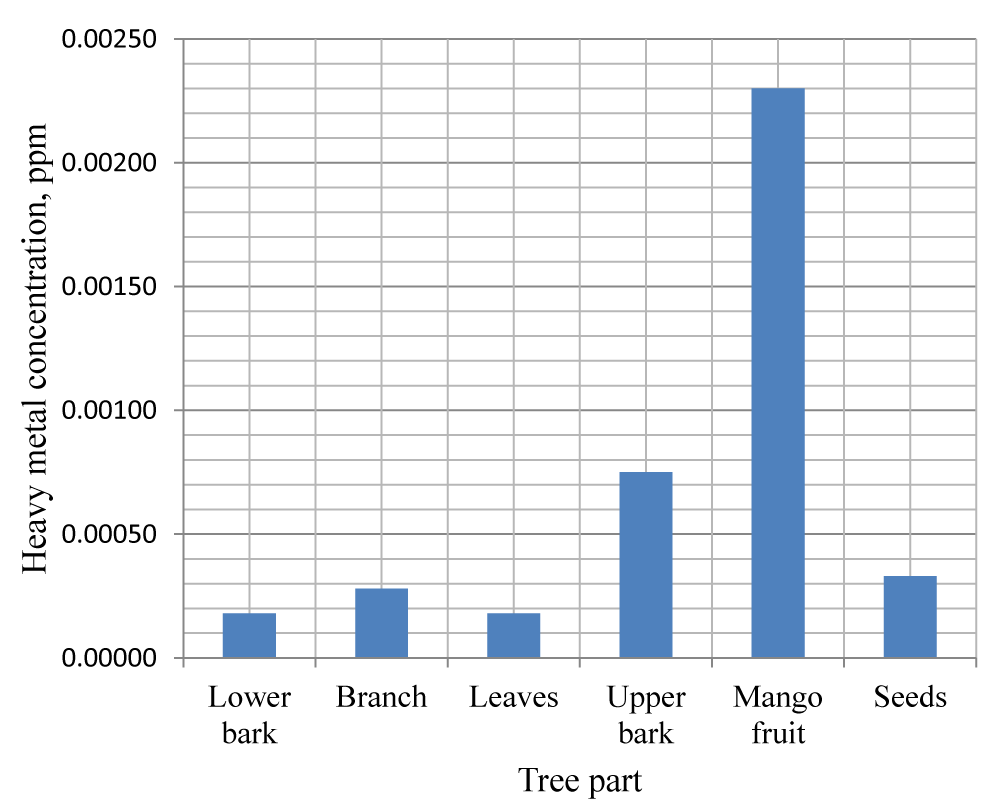

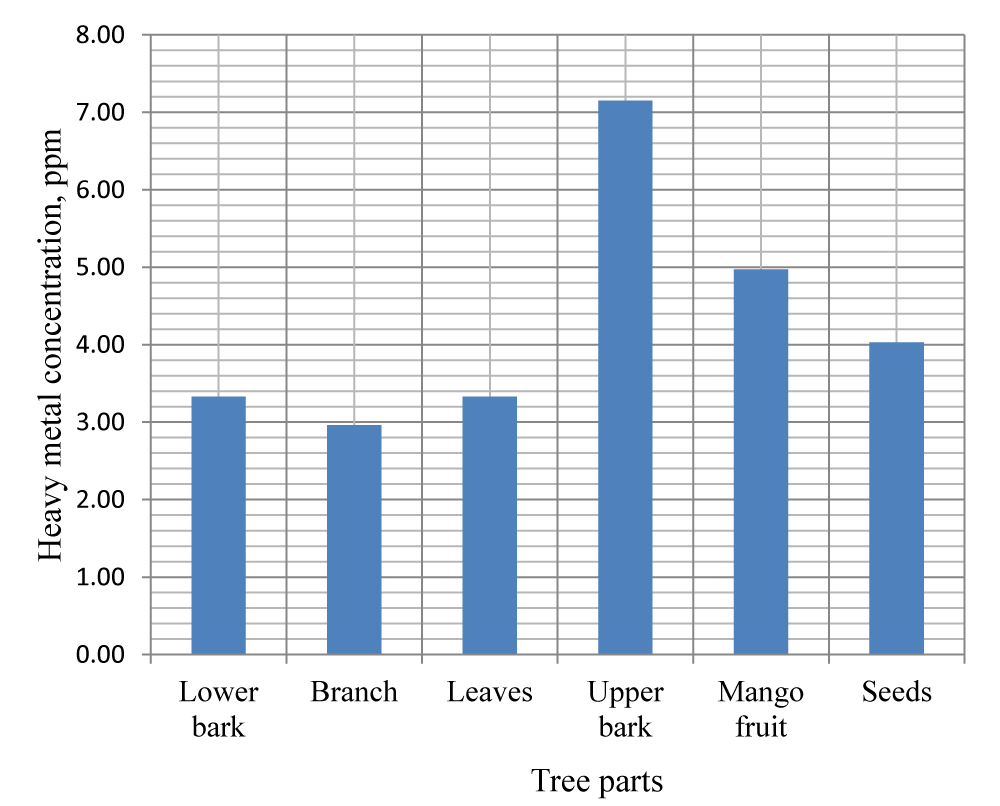

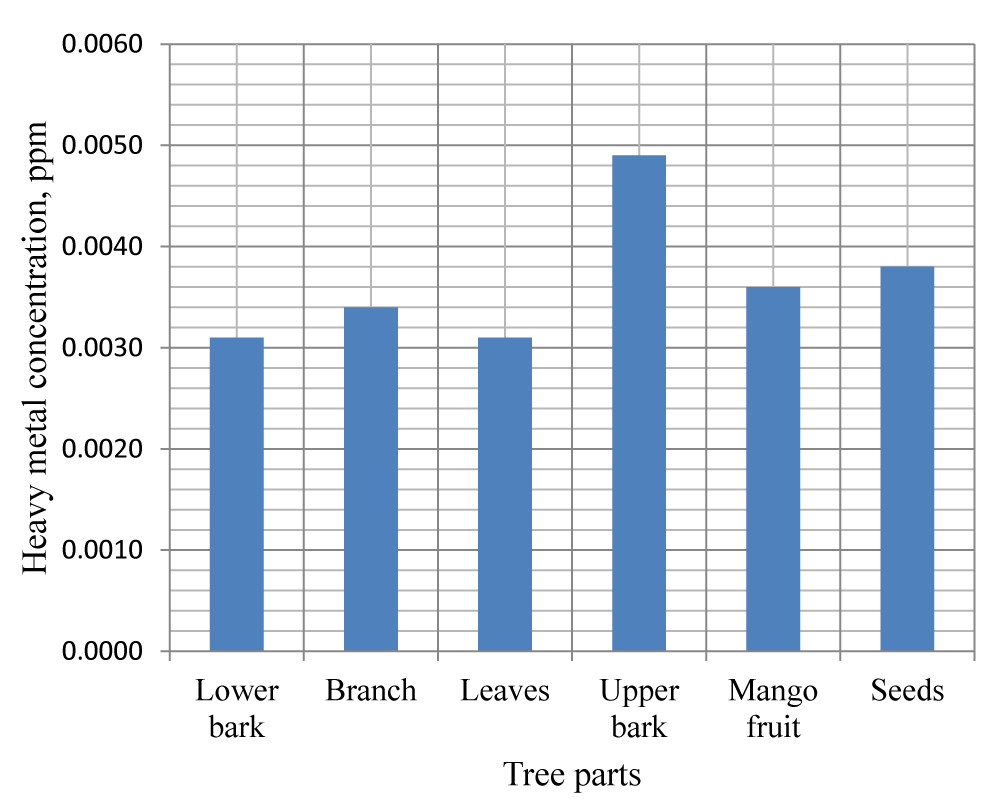

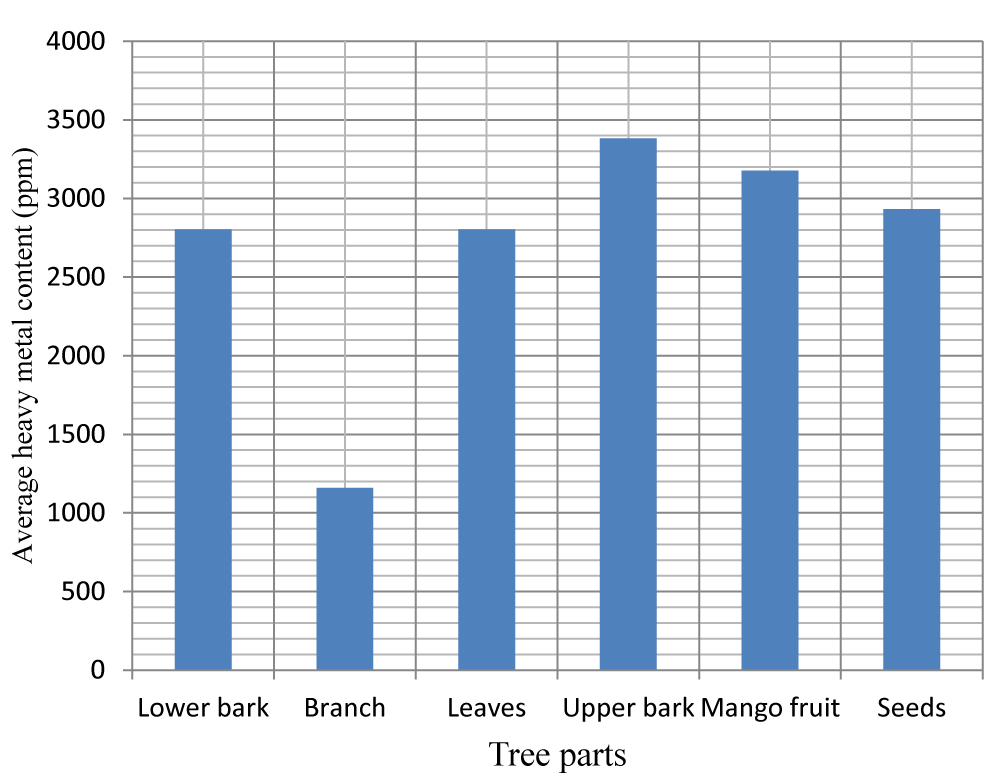

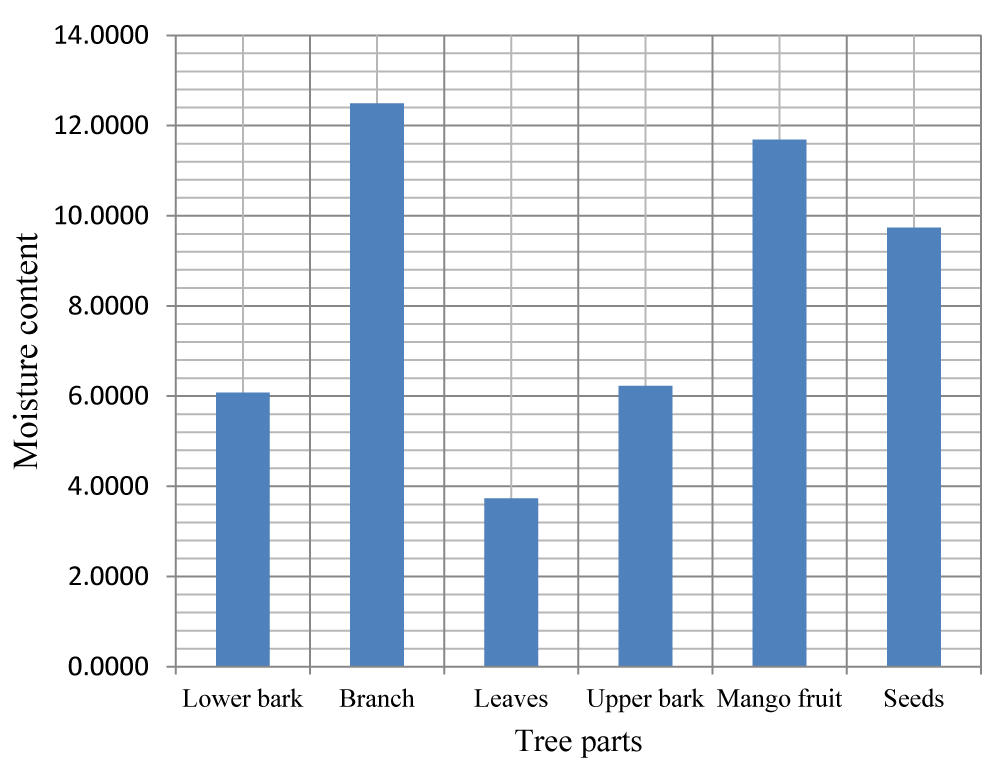
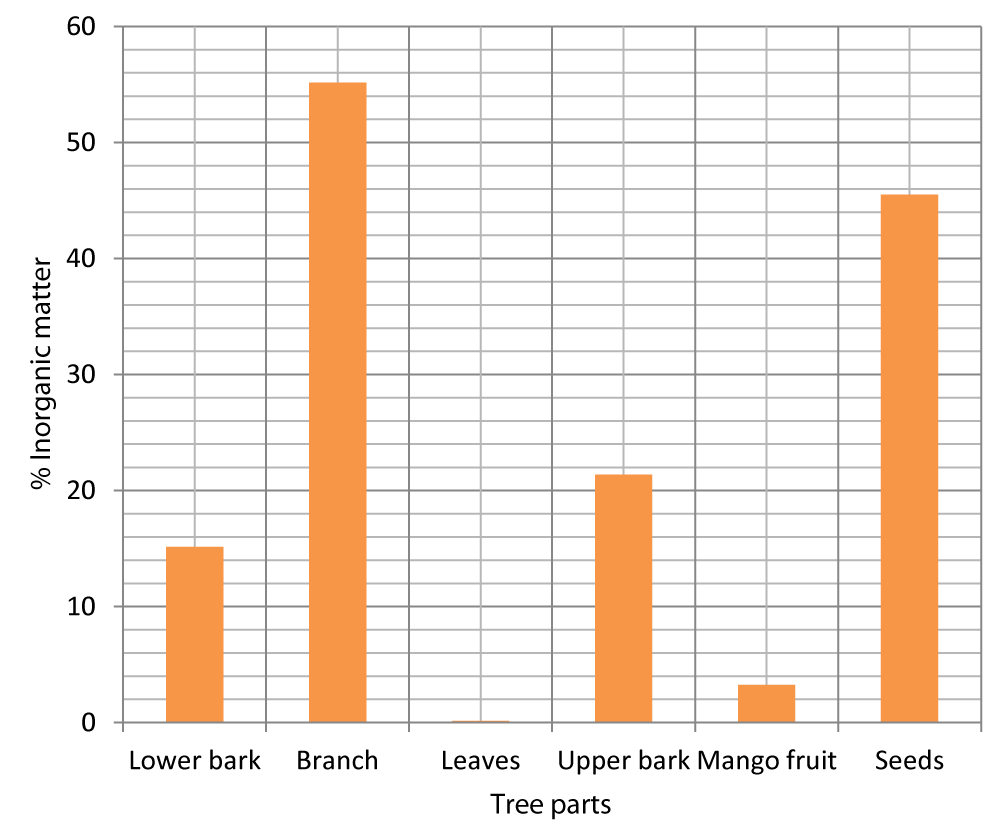


 Save to Mendeley
Save to Mendeley
